Triginal MR 35 | Tablet | 14 pcs
৳ 140.00
Brand Name: Triginal MR 35
Generic: Trimetazidine Dihydrochloride
35 mg
Manufacturer: Radiant Pharmaceuticals Ltd
Unit Price: ৳ 10.00 (3 x 14: ৳ 420.00)
Strip Price: ৳ 140.00
Composition:
TriginalTM MR 35 mg Tablet: Each film coated modified release tablet contains Trimetazidine Dihydrochloride BP 35 mg.
Pharmacology:
Trimetazidine is an anti-ischemic agent widely used in the treatment of coronary artery disease. It inhibits the enzyme long-chain 3-ketoacyl coenzyme A thiolase, which is the final enzyme in the free fatty acid (FFA) β-oxidation pathway and transfers oxygen to glucose pathway which increases the metabolic rate of glucose and maintains proper energy metabolism during ischemia. FFA oxidation provides more energy but it is associated with increased oxygen consumption whereas glucose oxidation requires less oxygen consumption. When oxygen is low in supply, the oxidative processes of FFA and glucose are disrupted and leading to an increased rate of FFA oxidation and decreased rate of the glucose metabolism, which results in accumulation of lactic acid and causes development of metabolic acidosis. Trimetazidine prevents these production of lactic acid by increasing glucose oxidation rate and ultimately prevents angina pectoris.
Pharmacodynamics:
In patients with ischemic heart disease, Trimetazidine acts as a metabolic agent, preserving the myocardial high-energy phosphate intracellular levels. Anti-ischemic effects are achieved without concomitant haemodynamic effects.
Pharmacokinetics:
Absorption: Trimetazidine is well absorbed after oral administration & maximum concentration is observed on an average of 5 hours after taking
the tablet. Steady state is reached by the 60th
hour.
Distribution: The apparent distribution volume of Trimetazidine is 4.8 l/kg & protein binding is low.
Metabolism: Trimetazidine is metabolised hepatically into inactive metabolites.
Elimination: Trimetazidine is eliminated primarily in the urine, mainly in the unchanged form. The elimination half-life of Trimetazidine is on average of 7 hours in healthy young volunteers and 12 hours in subjects aged more than 65 years.
Indication:
TriginalTM MR is indicated in adults as add-on therapy for the symptomatic treatment of patients with stable angina pectoris who are inadequately controlled by or intolerant to first-line anti-anginal therapies.
Dose & administration:
The dose is one tablet of 35 mg twice daily during meals.
Patients with renal impairment: In patients with moderate renal impairment (creatinine clearance [30-60] ml/min) the recommended dose is 1 tablet of 35 mg in the morning during breakfast.
Elderly patients: Elderly patients may have increased Trimetazidine exposure due to age-related decrease in renal function. In patients with moderate renal impairment (creatinine clearance [30-60] ml/min), the recommended dose is 1 tablet of 35 mg in the morning during breakfast. Dose titration in elderly patients should be exercised with caution.
Route of administration:
Must be taken orally.
Contra-indication:
Contraindicated in hypersensitivity to the active substance or to any of the excipients, parkinson disease, parkinsonian symptoms, tremors, restless leg syndrome and other related movement disorders, and severe renal impairment (creatinine clearance <30 ml/min).
Warning and precaution:
This medicinal product is not a curative treatment for angina attack, nor is it indicated as an initial treatment for unstable angina, nor myocardial infarction, nor in the pre-hospital phase, nor during the first days of
hospitalization. In the event of an angina attack, the coronaropathy should be reevaluated and an adaptation of the treatment considered.
Trimetazidine can cause or worsen parkinsonian symptoms (tremor, akinesia, hypertonia), which should be regularly investigated, especially in elderly patients. In doubtful cases, patients should be referred to a neurologist for appropriate investigations. The occurrence of movement disorders such as parkinsonian symptoms, restless leg syndrome, tremors, gait instability should let to definitive withdrawal of Trimetazidine.
These cases have a low incidence and are usually reversible after treatment discontinuation. The majority of the patients recovered within four months after Trimetazidine withdrawal. If parkinsonian symptoms persist more than four months after drug discontinuation, a neurologist opinion should be sought.
Falls may occur, related to gait instability or hypotension, in particular in patients taking antihypertensive treatment.
Side effects:
Common: Dizziness, headache, abdominal pain,diarrhea, dyspepsia, nausea & vomiting, rash, pruritus, urticaria, asthenia.
Rare: Palpitations, extrasystoles, tachycardia, arterial hypotension, orthostatic hypotension that may be associated with malaise, dizziness, fainting, flushing particularly in patients taking antihypertensive treatment.
Use in pregnancy and lactation:
Pregnancy: It is preferable not to take this medicine during pregnancy. If you discover that you are pregnant whilst taking this medicine, consult your doctor as he/she alone can judge the necessity of continuing your treatment.
Lactation: In the absence of data on excretion in breast milk, breastfeeding is not recommended during treatment.
Use in children & adolescents:
The safety and efficacy of Trimetazidine in children aged below 18 years have not been established. No data are available.
Drug interaction:
With medicine:
No drug interactions so far have been reported.
With food & others:
Food does not affect the bioavailability of Trimetazidine.
Overdose:
Consult with doctor immediately.
Storage:
Do not store above 30°C, protect from light & moisture.
Keep out of the reach of children.
Packing:
TriginalTM MR 35 mg Tablet: Each box contains Alu-Alu blister packs of 42 (3×14´s) film coated modified release tablets.
| Generic Name | Trimetazidine Dihydrochloride |
|---|---|
| Tablet | 35 mg |
Only logged in customers who have purchased this product may leave a review.




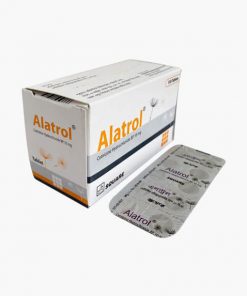
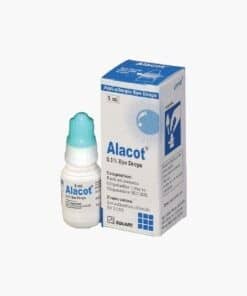

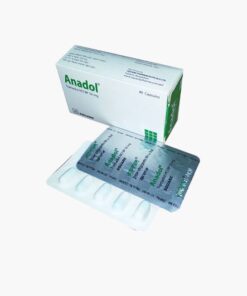
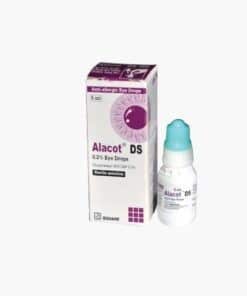
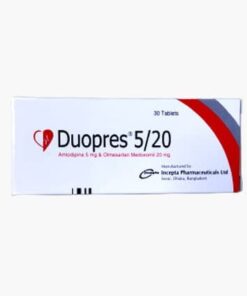
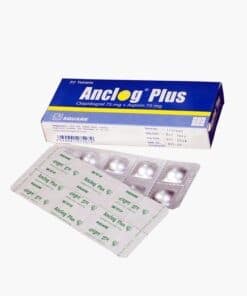
Reviews
There are no reviews yet.